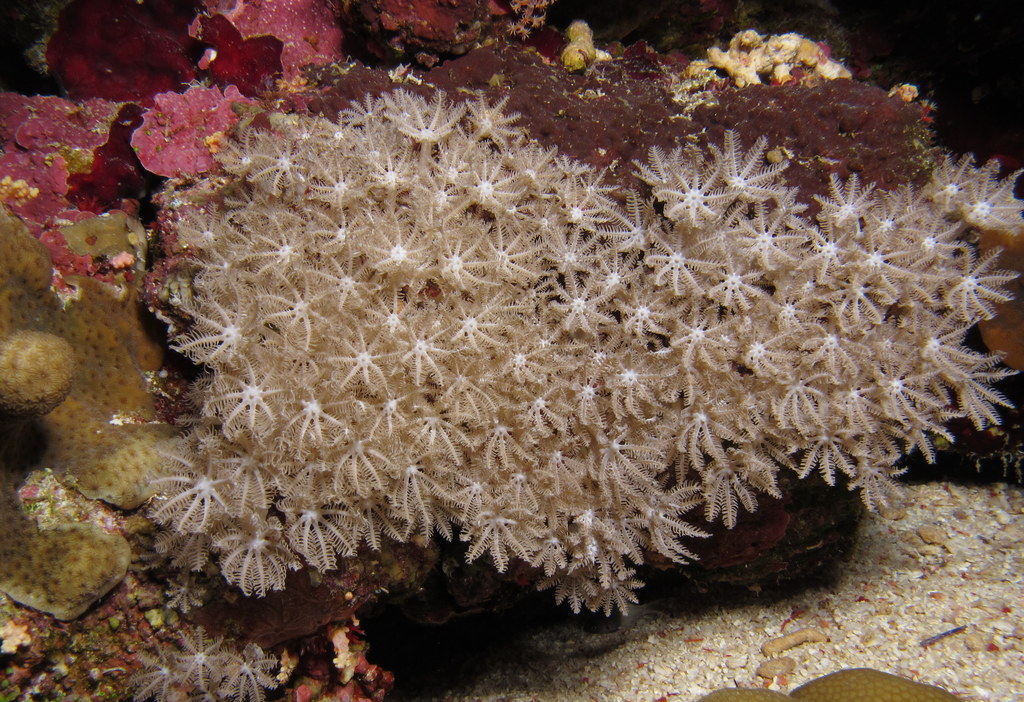
One of the most popular types of corals for aquariums are soft corals. These are beautiful corals that can provide movement and color to your display tank. Due to the ability to easily frag them, and because they can survive well from cutting, they have become popular.
There are hundreds of species of soft coral in the oceans, but for this article, we will be focusing on some of the most popular ones that are used in the aquarium hobby.
Here is a list of different types of soft corals that are used in saltwater aquariums:
- Xenia
- Toadstool Mushroom Leather Corals (Sarcophyton)
- Zoanthids
- Leather Corals (Sinularia)
- Green Star Polyps
- Devil’s Hand (Lobophytum)
- Palythoa Corals
- Kenya Tree Corals (Capnella)
- Pipe Organ Corals (Tubipora musica)
- Cabbag Leather Coral
What Is A Soft Coral?
A soft coral belongs to an order called Alcyonacea. These do not have a hard stony skeleton. Instead of a stony skeletal base, these corals will have a fleshy stalk that is soft. Their base is made up of sclerites which are made of calcium carbonate. Some of the most common types of sotf corals are Leather corals, Xenia, and Green Star Polyps.
Xenia
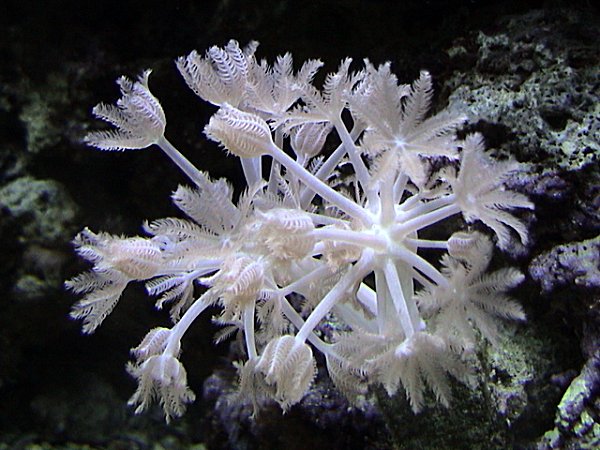
The Xenia or Pulsing Xenia is a type of soft coral that has some controversy around it. People love it because of it’s beautiful pulsing movement and its ability to grow quickly. New reef tank owners are especially fond of this aspect. It can be frustrating as a new tank owner waiting for your live rock to be covered in coral colonies.
The downside to this soft coral is its ability to grow too fast. It grows so fast that some aquarist refer to it as a weed. Because of its low cost, rapid growth, and “beginner” tag, a lot of experienced reef keepers snub their nose at the Xenia.
This pulsing Xenia can be a great addition to your tank if you manage it well. It needs to be isolated on a single rock away from anything else. It will eventually cover the entire rock, and it will help add some motion to your reefscape.
Toadstool Mushroom Leather Corals
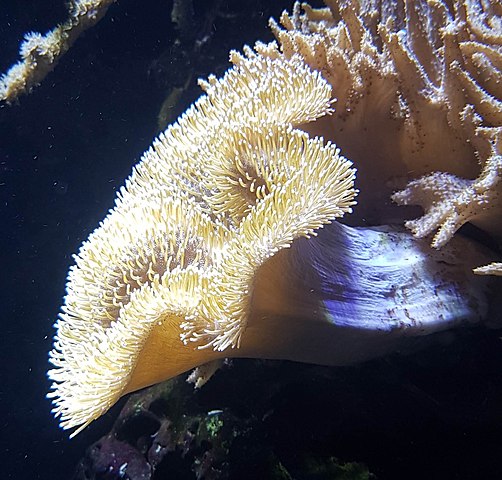
Toadstool Leather Corals (Sarcophyton sp.) are soft corals that are very popular in reef tanks. They are easy to care for, and are popular for new reef tanks due to their hardiness. They can be confused with Toadstool corals, but as they mature the coral will fold in on itself. This makes it more recognizable.
These are great for almost any saltwater aquarium that features soft corals. As with most Leather corals, they get the stigma of being a beginner only species, but once you get a full size coral, they will look amazing in any tank.
Like other Leather corals, Toadstools will shed it outer layer to get rid of the old layer that may be full of contaminants and detritus.
Some Sarcophyton have short tentacles and others have long tentacles. Some of them will actually host Clownfish which is more common in anemones.
Zoanthids
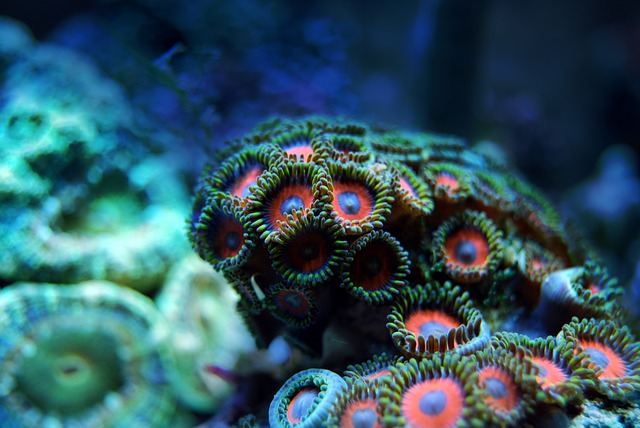
Zoanthids are one of my favorite types of sof corals. They come is so many different color variations and price points that you can easily find one that works for your saltwater tank.
This type of soft coral is peaceful, easy to keep, and they grow relatively quickly. Once a frag grows out and covers a large area, they can really make a tank pop. Zoa gardens are one of my favorite things to see in any reef tank.
Leather Corals (Sinularia)
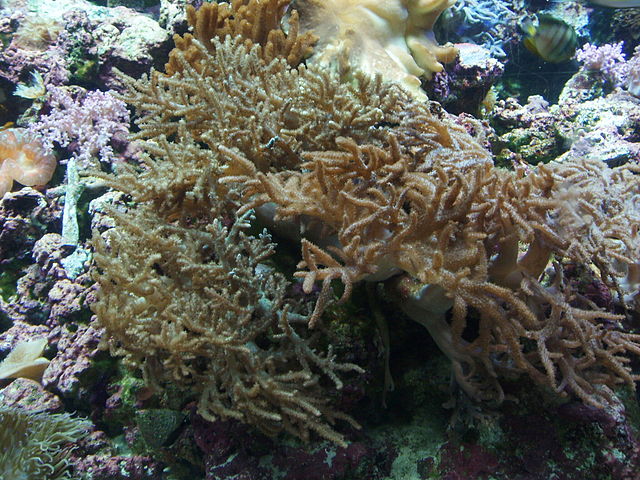
Finger leather corals are a very common soft coral in reef tanks. They are a great beginner coral, so a lot of new reef aquarists will start with a species of Sinularia. They come in different colors like green and brown, and as they grow, their finger like appendages get larger.
These soft corals prefer medium to high flow and moderate lighting. They are very hardy, and will adapt to most aquarium environments that have normal parameters.
They are semi-aggressive and can release toxins that are harmful to other corals.
Sinularia come from Indo-Pacific areas like Tonga and Fiji.
Green Star Polyps
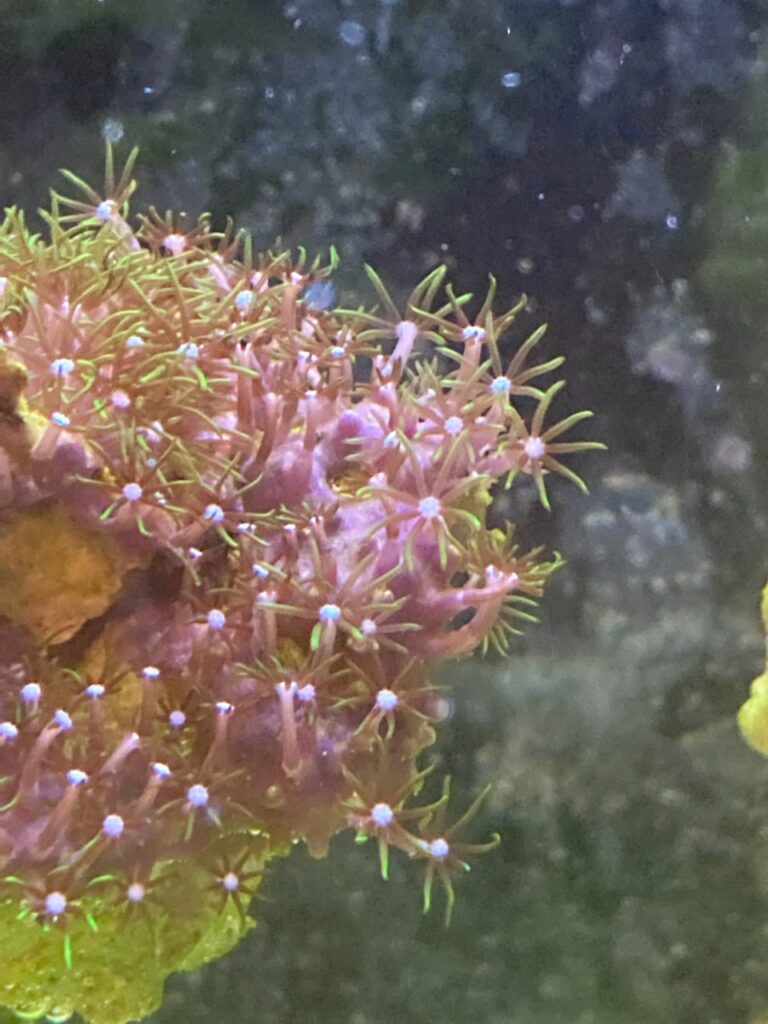
GSP’s or green star polyps are another soft coral that has a love/hate relationship with reef tank owners. They are inexpensive, fast growing, and hardy which makes them perfect for beginners. The problem comes from the whole “fast growing” part. They are often referred to as weeds, like Xenia because they can overtake a tank.
The way around this problem is to use that information to your advantage. Most people who put GSP in their tank will isolate it on a rock island so that it does not spread thoughout the tank. People will even let it cover the back glass of their aquarium to provide some color and movement to an otherwise unused part of the tank. They are also used as a grass bottom on tanks without substrate. This will prove a green grass coverage for the bottom of the tank.
These soft corals can be a great addition to a tank if you know how to grow them correctly.
Devil’s Hand Leather Coral
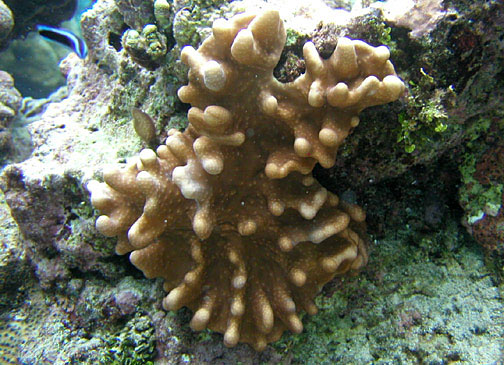
The Devil’s Hand Leather coral (Lobophytum sp.) is a peaceful and easy to care for soft coral. It gets its name from the prickly looking fingers that come up from the base which looks like the palm of a hand.
This type of coral comes in color shades of green, tan, brown, and yellow colors.
Palythoa Corals
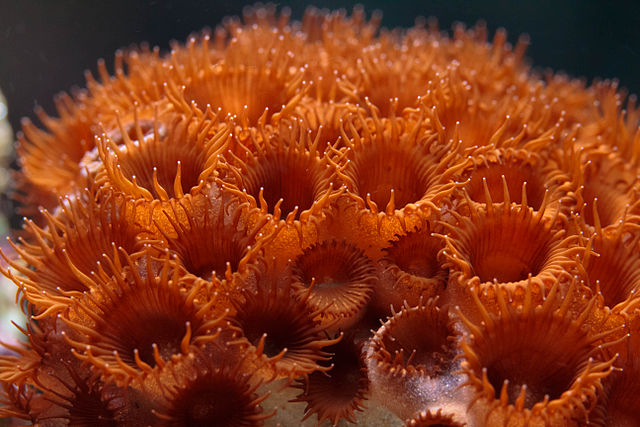
Palythoa corals are almost identical to Zoanthids. These are a colonial coral, so they will form colonies in your tank. Palys come in a variety of color patterns, and most reef tank owner have a difficult time distinguishing these from zoas.
If you plan on adding Palythoas to your aquarium, it is a good idea to understand about Palytoxin poisoning before you handle them.
Kenya Tree Coral
Kenya Tree Corals (Capnella sp.) are one of the hardiest types of soft corals. They are very beginner friendly, and this is one that you can see in big box fish stores a lot. Most big box stores only carry a few species like some leathers due to the fact that they want to sell animals that have a high success rate.
Most of the time you will see it in shades of brown, but you can also find them in pink. These softies will grow quickly in most tanks especially if you have great water parameters.
Pipe Organ Coral
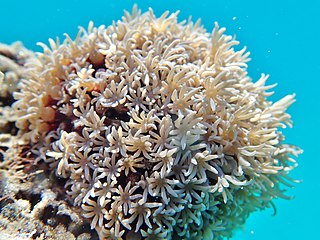
The Pipe Organ Coral (Tubipora musica) is a unique soft coral because it has a calcium carbonate hard skeleton of tubes. Even though it has a stony skeleton, it is still considered a soft coral.
This coral requires a more stable tank than most of the other softies in this article. They are great to fill in dead spaces, and they can grow quickly.
Cabbage Leather Coral
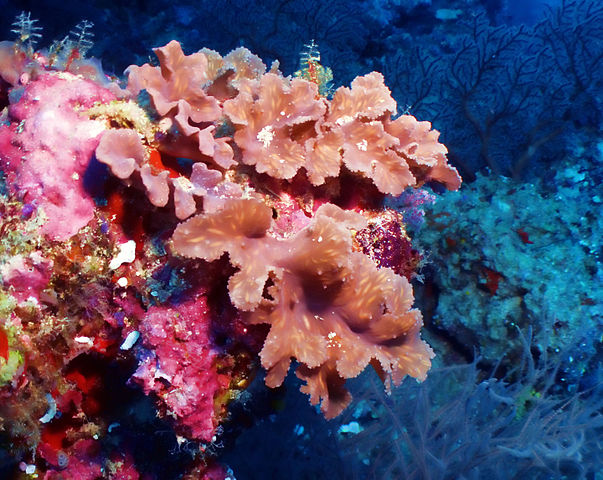
Cabbage Leather (sinularia brassica) is a type of soft coral that resembles the leaf of a cabbage, hence the name. They are like most other sinularia in that they are hardy and great for beginners. They are also semi-aggressive and will get defensive if other corals get near it. It is a good idea to keep activated carbon in a tank that has Leather corals in it.
Commonly Asked Questions About Soft Corals
What Do Soft Corals Eat?
Most soft corals get their nutrition from the symbiotic zooxantheli that lives inside them. Their energy comes from photosynthesis from sunlight or reef lights in your aquarium. They will also feed on phytoplankton, plankton, and detritus that is floating around in the water.
You do not need to supplement soft corals with reef food, but many of them will have more vivid colors and appear more healthy if you supplement them with reef food like Reef Roids or Reef Energy AB+.
The best food for soft corals are premade reef food, cut up mysis shrimp or phytoplankton.
Are Soft Corals Easy To Keep?
Most soft corals are easy to keep due to their hardiness in reef tanks. They are able to survive and thrive in less than perfect water, and most species can tolerate minute changes in water parameters unlike some of the more difficult SPS and LPS species.
Most of them do well with low to moderate lighting, so you don’t need the most expensive reef lights to keep soft corals in your tank.
Summary Of Types Of Soft Coral
There are a lot of different species of soft coral that will thrive in a home reef aquarium. Most soft corals are easy to maintain and beginner friendly. Softies are considered corals for newbies because most experienced reef tank owners like to keep more difficult species like SPS and LPS.
